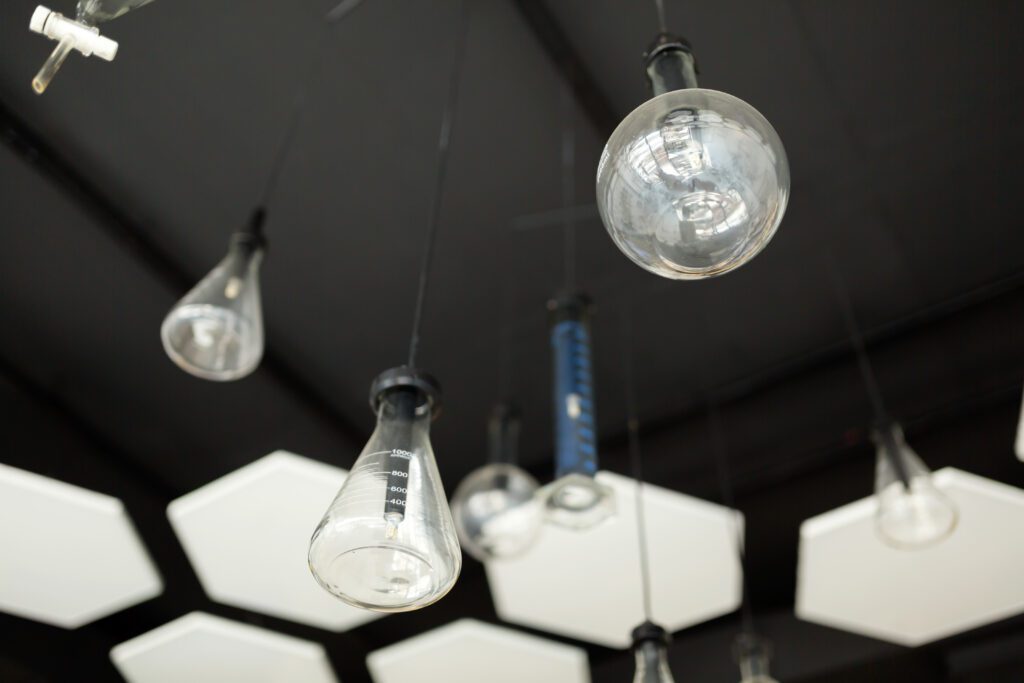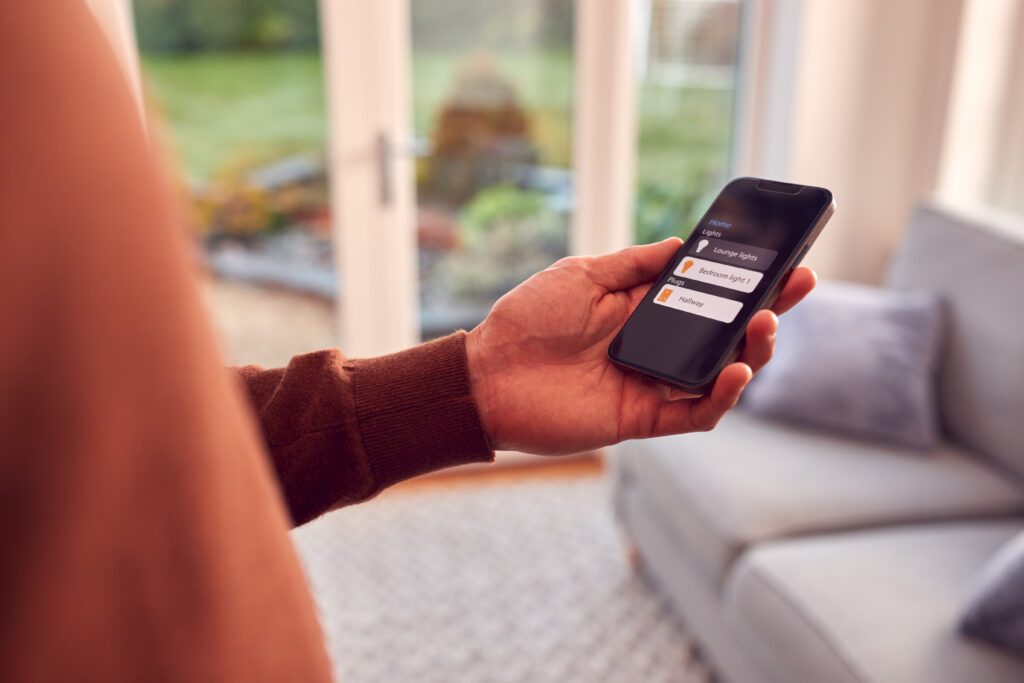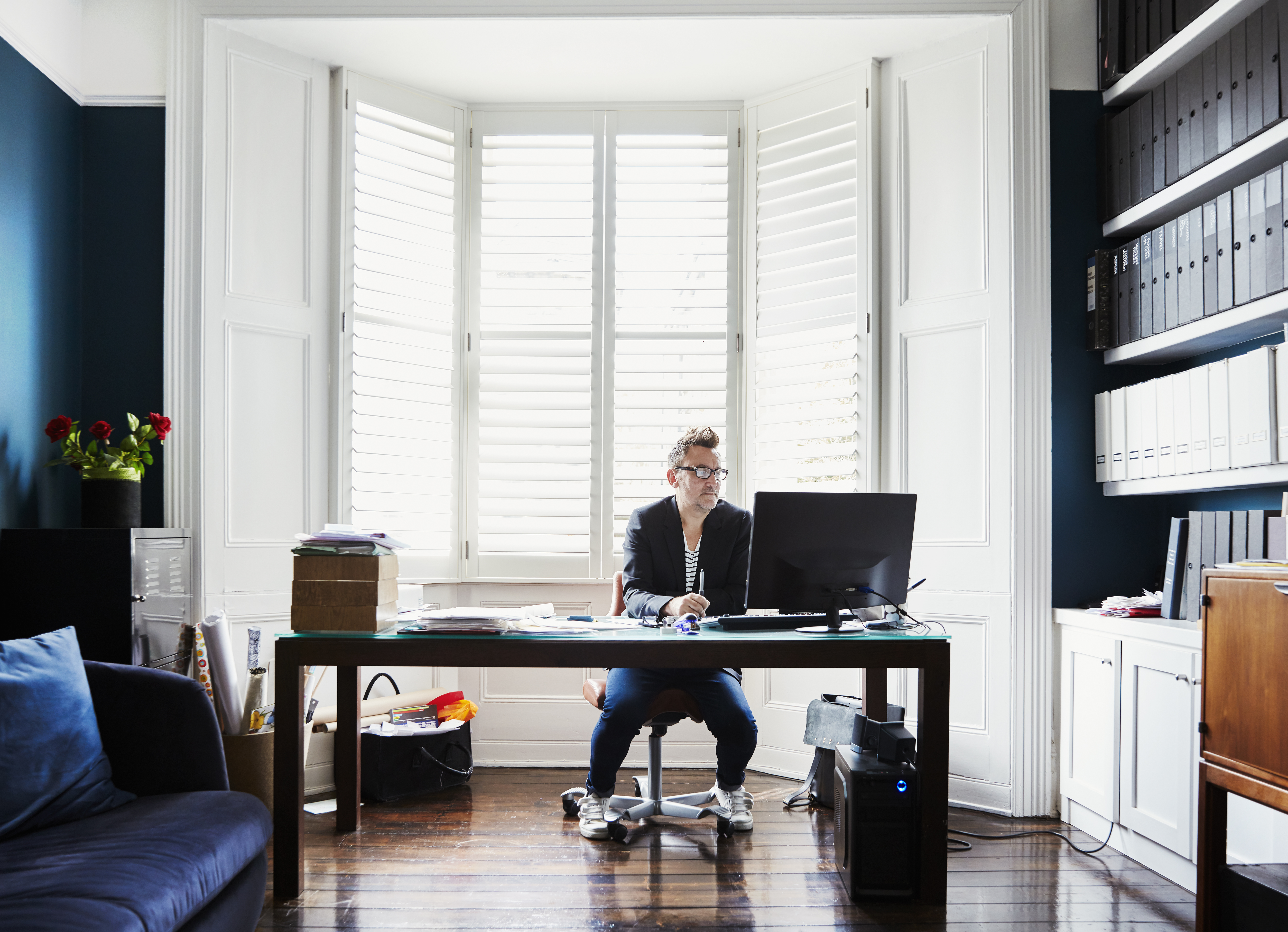Over the past year, many of us have undergone a radical transformation from commuting office workers to home office dwellers. And while pants have become optional (don’t worry, I’m not judging), proper lighting in your workspace is not. Why? Well, it’s pretty much determined by those two orbs in your head fondly known as your eyes. Poor lighting not only gives your interior decor a gloomy aura but it can also lead to eye strain and fatigue. Yikes! But don’t worry my friend, I’m here to guide you to a future filled with proper illumination. So, grab your coffee, put on some comfy pants (or not), and let’s dive into the wonderfully enlightening world of desk lamps.
“The right light can illuminate your ideas, brighten your mood, and literally, light your path to success.”
Now, you might wonder, “Why a whole article about desk lamps? How complex can it be to choose a light bulb on a stick?” Well, strap in, because we’re about to take a ride through the incredible nuances and choices available for desk lamps. We’ll navigate you through the different types, how to choose just the right one for your needs, how to set it up in the perfect position, and even what features to look for. Oh, and let’s not forget about maintenance. All of these tips and tricks go hand in hand to ensure that your workspace is kept friendly for your eyes and that eye strain stays far, far away.
Table of Contents
Different Types of Desk Lamps for Optimal Eye Comfort
Let’s face it, folks; not all desk lamps are created equal. You may think a desk lamp is just a desk lamp, but oh no, there’s more to the story. If you want to bathe your workspace in a glorious light that coddles your eyeballs instead of punching them, you’ve got to get acquainted with the different types of desk lamps out there. Trust me, your eyes will thank you.
- LED Desk Lamps: Now, let’s talk LEDs – these flashy newcomers are the popular kids on the block. They’re energy-efficient, long-lasting, and offer a range of color temperatures. Bonus point? They’re as cool as a cucumber, ensuring heat won’t be an issue.
- Halogen Desk Lamps: These fellas have been around the block. They provide warm, bright light that’s perfect for detailed tasks. But be warned, they could turn your workspace into a sauna – they get hotter than a jalapeño in July.
- Fluorescent Desk Lamps: Remember when mom told you to eat your greens? That applies to lighting too. Fluorescent lamps are kinda of like the kale smoothie of the lamp world: energy-efficient but can be a bit, well, flat. Still, it’s a flavorful light source for broader tasks.
- Incandescent Desk Lamps: Let me introduce you to the OG of desk lamps. These classics give off a warm, inviting light that’s perfect for general tasks or creating a cozy feel. But they can be energy-guzzling monsters, so keep that in mind.
Remember, the bulb’s what matters most. So before you get carried away by a lamp’s sleek aesthetic or a mesmerizing salesman’s pitch, make sure it’s got the right light to keep your eyeballs from staging a mutiny. So, what say you? Ready to pick your ideal desk lamp and join the ranks of happy eyeballs everywhere? Onward!
Factors to Consider When Choosing the Perfect Desk Lamp
So, you’ve decided to enter the wonderful world of desk lamp lighting scenario – think yoga master of the lamp world.
Brightness Levels and Controls
Some lamps are as unyielding as a bank manager when asked for a loan. Others show a more flexible disposition and let you control their brightness levels with a turn or a tap. The latter is preferable in an office situation. After all, who doesn’t want to reach out and tweak their lighting at will?
The Lifespan of the Bulb

Just like a delightful TV series, you don’t want your desk lamp to have a lifespan that’s over in a flash. An LED light bulb can last for years, especially when compared to traditional incandescent bulbs. Plus, they’re more energy efficient. That’s a win for Mother Nature and your utility bill.
The Lamp’s Color Temperature
And while we’re still addressing technical jargon, let’s talk about color temperature. Did you know that the color of light can impact your productivity and mood? Generally, warmer light is soothing, while cooler light helps you stay alert. So, planning to burn the midnight oil? You’ll want a lamp that can do cold light to keep you on your game.
The color temperature of lighting can affect productivity and mood in a workspace.
Dollar, Dollar Bills Y’all
Last, but certainly not least, let’s talk about money matters. Just like ordering off a restaurant menu without prices, it’s important to know what you’re getting into before you commit. While it may be tempting to splurge on a luxurious, do-all lamp, remember to balance this against your actual needs and budget. Not all rich-looking lamps are gold, my friend.
To sum up – look for a well-sized, flexible lamp with variable brightness control that uses durable and efficient bulbs. Oh, and remember to keep an eye on the price tag!
The Relationship Between Light Color Temperature and Eye Strain
Now, don’t get me wrong. I know the phrase ‘light color temperature’ sounds like one of those techie terms that make your eyes glaze over faster than a donut in an icing factory, but stay with me. Understanding this concept can brighten up your workstation, literally and figuratively.
So, what does light color temperature mean? It’s simply a way to describe the warmth or coolness of a light source. It’s measured in Kelvins (K) – no, not the guy from accounting, but a unit of measurement for temperature.
Honestly, if Kelvin from accounting started giving off light as warm as some of these lamps, I’d be seriously concerned. Anyway, back on track – typically, lower Kelvin values mean the light will be more yellow and warm, while higher values result in a bluer, cooler light.
But you’re probably thinking, “What’s that got to do with my peepers?” Well, let me explain.
Research shows that different light temperatures can have different impacts on your eyes. Warmer light (around 2700K-3000K) tends to be easier on the eyes in the evening and promotes relaxation. On the other hand, cooler light (above 5000K) mimics natural daylight and can improve alertness and mood during the day.

So next time you’re plonked in your chair at 2 AM, working on a report that’s about as riveting as watching paint dry, consider switching the light color temperature to cooler. You might just trick your brain into thinking it’s noon!
Whoa there, partner! Walking the line between too cool or too warm lighting is a bit like navigating a tightrope. It’s all about achieving that sublime middle ground – you know, the ‘just right’ sweet spot that’s kind to your eyes. It’s like a Goldilocks quest but for lighting!
Remember how our dear Goldie didn’t plop down with the first bowl of porridge she stumbled upon? Well, my friend, you might just have to channel your inner Goldilocks too. A bit of experimentation may be to unearth that impeccable light color temperature that caters to your eyes and tasks. You’re not a one-size-fits-all sort of individual. So why on earth should your lighting be any different, right?
How to Position Your Desk Lamp for Maximum Eye Relief
It’s one thing to buy the right desk lamp, and another to know how to position it for maximum eye relief. Sure, your shiny new lamp is great but do you ever catch yourself squinting or straining to see because of a poorly placed light? Fear not! Let’s shed some light on the matter (pun absolutely intended).
Find the best angle
If you’re right-handed, the lamp should be placed on the left side of your desk, and vice versa. Why? Simply to avoid casting a shadow from your hand on your work. But what about the angle, you ask? Ideally, the lamp should be angled so that the light source is slightly ahead and slightly above your line of sight, kind of like a mid-afternoon sun. Above all, you want to aim for a shadow-free workspace.
Distance matters
Distance is also a key player here. In a perfect world, your lamp should sit about 15 to 20 inches from your work surface. Too close, and it’s an invitation to a squint fest (and we all agree, those aren’t fun!). Too far away? Hello, eagle-eye impressions! Aim for a nice middle ground.
Protect those peepers
And finally, take care to avoid direct glare. The last thing you want is your light shining directly into your eyes – talk about a surefire recipe for eye strain. Make sure your lamp’s light is diffused, either by a shade or the angle at which it falls. If you find that your eyes are still feeling fatigued, consider using a lamp with a dimmer. Hey, your eyes will thank you!
Now, armed with these tips, go forth and adjust your desk lamp for optimum comfort. Trust me, your eyes, and your productivity, will appreciate your efforts.
Key Features to Look for When Shopping for a Desk Lamp
Alright, my friend, it’s time to get serious… about desk lamps, that is! Buckle up, because I’m about to drop some knowledge bombs on the key features you should be keeping an eye out for when shopping for your new desk lamp.
Adjustable Brightness
First off, let’s chat about brightness. Not all tasks require the intensity of a thousand suns (que the sunglasses) and others might need more lighting than a candle-lit dinner. Look for a desk lamp that lets you adjust the brightness to your liking. It’s like being a DJ, but instead of dropping beats, you’re controlling light intensity. Now, that’s what I call lit!
Color Temperature Control
Next up in the lighting control extravaganza is color temperature. “Color what now?” you ask. Don’t worry, I’ve got you covered. Some lamps offer adjustable color temperatures. This means you can switch between a warm, relaxing light and a cool, productivity-boosting light. It’s like changing the mood of your workstation at the flick of a switch. Who knew desk lamps could be so versatile?
Flexibility features
Imagine you’re a detective working on a case. You need to shine a light on a specific part of your desk to find the missing clue. What do you need? A flexible desk lamp! Look for a lamp with an adjustable arm or neck, so you can direct the light right where you need it. It’s like your own personal spotlight operator, only a lot less talkative.
USB ports
More and more desk lamps these days are coming with built-in USB ports! Talk about multitasking, right? You can charge your phone while you work and never have to worry about running out of battery mid-Zoom call again. Now that’s what I call efficiency!
Energy Efficiency
Finally, let’s talk about energy efficiency. Ever since Captain Planet, we know we gotta do our part for the planet, right? So why not do it with your desk lamp? Look for one that uses energy-saving LED bulbs. Your wallet (and our planet) will thank you.
And there you have it, folks! Those are the key features you need in your desk lamp. Happy shopping, lamp enthusiasts!
Proper Desk Lamp Maintenance: Tips to Keep Your Lighting Setup in Top Shape
You’ve got your lamp, you’ve got it perched in the prime spot, and you’ve got all those fancy schmancy features figured out. Good job! Now it’s all about keeping that baby humming happily, throwing light on your daily grind. Because what’s the point of having a fancy lamp if it’s not in prime condition? Exactly. Zilch!
So let’s talk turkey about maintenance, shall we?
Keep it spotless
First things first, keep it clean, pal! Dust and grime can mysteriously accumulate on your lamp, dimming its glorious glow. Go for a gentle wipe with a microfiber cloth now and then, especially the bulb and shade. You wanna see every speck of your work while showing that lamp some TLC, kiddo.
Changing the bulbs
See, what’s a lamp without a bulb, huh? A fancy paperweight. So, replace those burn-out bulbs pronto! Go for long-lasting LEDs if you’re any shade serious about cutting energy costs, and who isn’t, right?
Flippin’ the switch
Aha! Ever thought about that little fella – the switch? Constant flicking wears it out over time. Now, we ain’t saying you tiptoe around it but use it like it’s not a punching bag. We get it, turning the lamp off can feel like a championship bout sometimes, but take it easy, champ!
Regular check-ups
No, your lamp doesn’t need to see a doctor. But keep an eye on the cord, looking for fraying or other damage. It’s not just about the light, safety is key in your home office too!
Long story short, take care of your lamp, and it’ll take care of you. Keep it clean, change the bulb when needed, be gentle with the switch, and check the condition regularly. Voila! You’re on the path to enlightened workdays and way fewer headaches. Shine on, you crazy diamond!

Leave a Reply